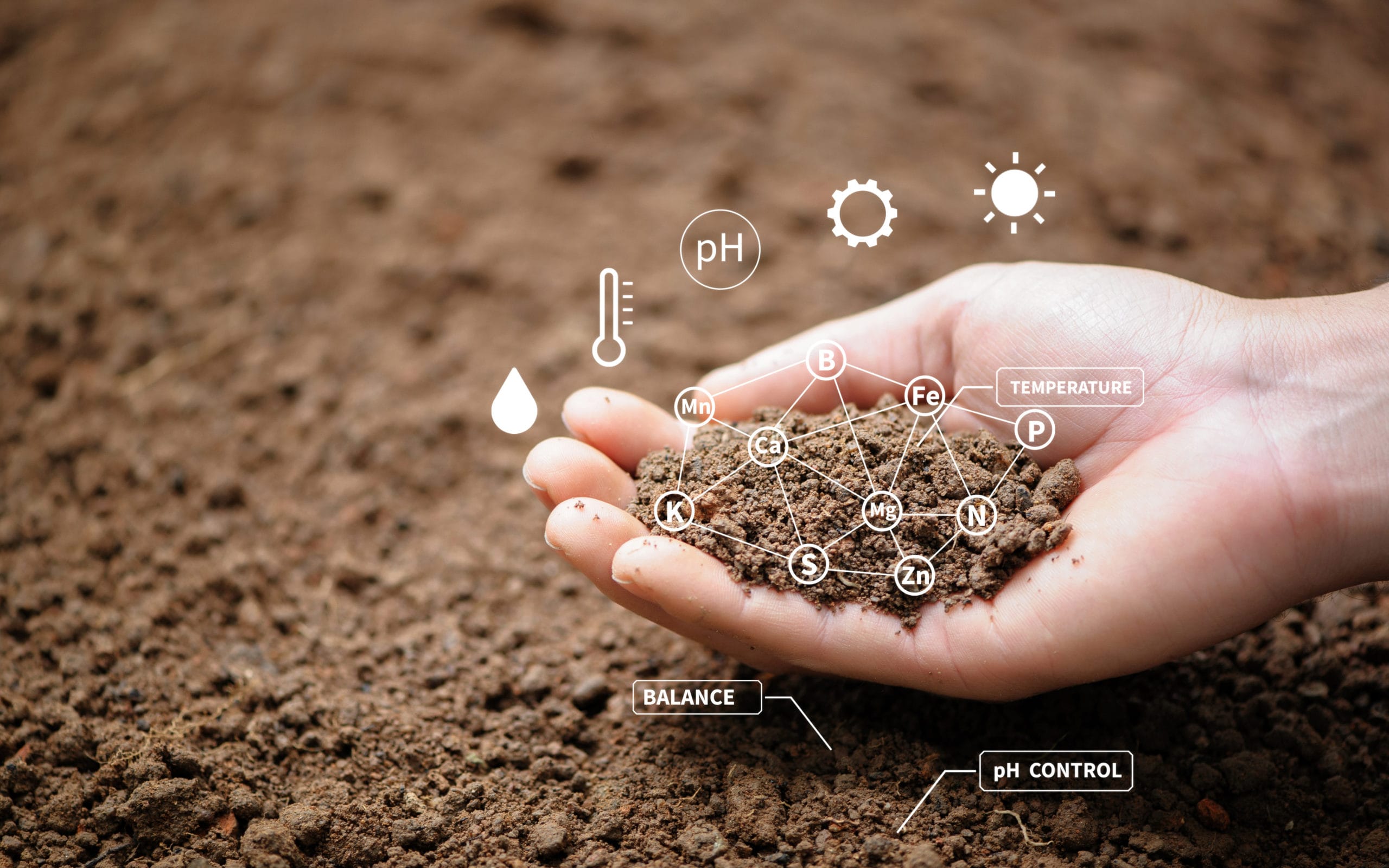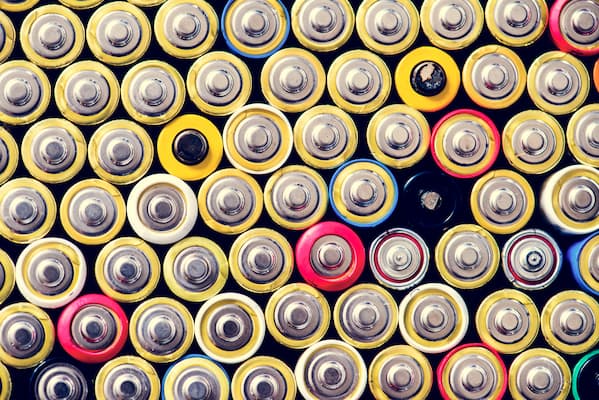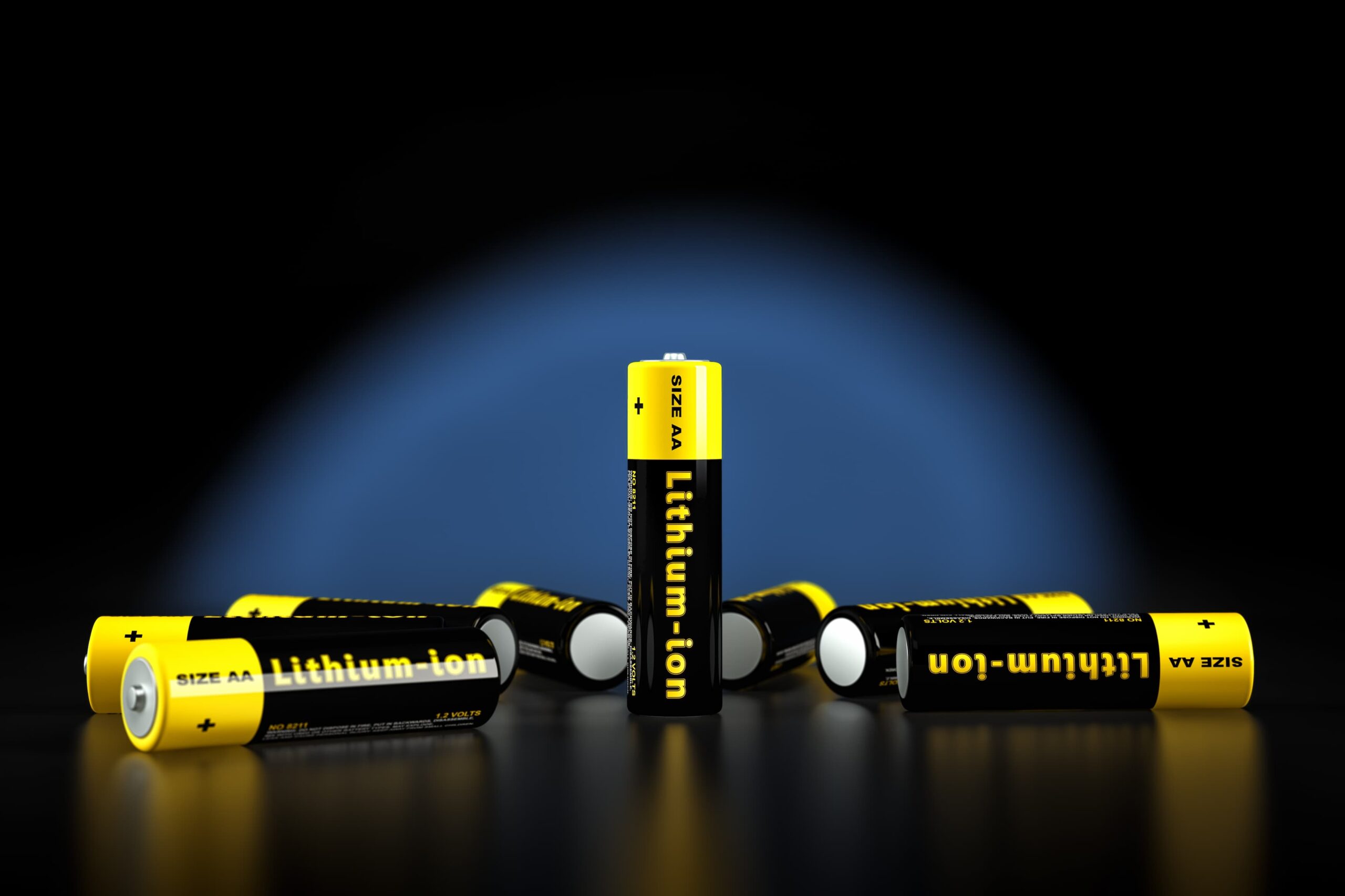Lithium-ion batteries (Li-ion) are known for their long battery life. This makes them a popular power source for many different applications and electronics. But, what should you do with Li-ion batteries when they reach the end of their lifecycle? Are lithium batteries recyclable?
The quick answer is YES! Lithium-ion batteries are recyclable. However, you should NEVER just throw them into your recycling bin and call it a day. Lithium batteries require a very specific battery recycling process to keep you and the environment safe.
In this guide, you will learn:
- What are lithium-ion batteries?
- How do lithium batteries work?
- Why you should always recycle lithium batteries
- 5 safe practices for the battery recycling process
- Where to take your lithium batteries for recycling
- & so much more!
Now that you’re charged up and ready to get started, let’s dive right in!
What Are Lithium-Ion Batteries?
Lithium-ion batteries are a type of rechargeable battery that provides long-lasting life to a variety of modern-day applications, including:
- Electronics (cell phones, laptops, tablets)
- Cordless power tools
- “Smart” products
- Golf carts
- Electric cars
- E-bikes
Today, there are 6 recognized types of lithium batteries. One of the most common types is called lithium cobalt oxide (LCO), which is found in portable electronics like your laptop.
Another well-known lithium type is lithium nickel cobalt aluminum oxide (NCA). You can find these batteries in Tesla vehicles.
How Do Lithium Ion Batteries Work?
Lithium batteries use lithium ions to create an electrical potential difference between the negative and positive poles within the battery.
This difference is known as voltage and is what gives the battery its power. Different types of lithium batteries have varying degrees of voltage – some containing more strength and power than others.
Furthermore, there is a “separator” built into the lithium battery that blocks electrons from crossing sides while lithium ions can slip through. This allows the battery to store energy for long periods. When the lithium battery is connected to a device, the blocked electrons are forced to pass through it. This is how the battery powers your device.
Are Lithium Batteries Recyclable?

Yes. All lithium batteries are recyclable. They should ALWAYS be recycled rather than thrown away. Here’s why.
Irresponsible Battery Disposal is Dangerous!
When lithium batteries and lithium-powered electronics are disposed of in landfills, they can easily break open and leach toxic chemicals into the environment.
These chemicals are extremely dangerous for humans, plants, and animals to come in contact with. Not to mention, they can be explosive if not handled properly!
Unfortunately, these deadly toxins usually end up in our water supply and are consumed by the local fish and wildlife. This is why lithium-ion batteries should be sent to certified electronics recycling facilities to extract the chemicals safely.
Critical Minerals: Recovering Rare Earth Minerals through Recycling

Want to know one of the biggest benefits of recycling lithium batteries? Lithium batteries contain valuable critical minerals recognized by the United States Geological Survey. These raw materials are economically important for the U.S. and include:
- Lithium
- Cobalt
- Nickel
- Manganese
What makes these elements “critical minerals” is their difficulty to be found and mined. In other words, they have a high supply risk potential. Furthermore, they cannot be easily substituted with other naturally-occurring minerals.
With that being said, the more lithium batteries you can recycle, the better it is for the U.S. economy.
Lithium Battery Recycling Process: 5 Safe Practices

Now that you know WHY you should recycle Li-ion batteries, let’s talk about HOW you should go about the battery recycling process.
1. Give Your Battery Proper Care
First, it’s important to note that you can get a lot more life out of your lithium batteries through proper care.
For instance, regularly check the charge of your battery and only leave the device plugged in for a set amount of time. When you charge lithium batteries too long, it can cause your battery to die faster.
While we’re on the topic of chargers, only use the chargers that came with the device. This will ensure your battery receives the right amount of charge at all times. You won’t believe how much longer your lithium batteries will last when you follow these simple tips!
But, all batteries come to an end eventually. Here’s what you should do when you’re ready to recycle your lithium-ion battery.
2. Send It to a Certified Electronics Recycler
The first step of the battery recycling process is to send your battery or electronic device to an accredited recycling facility. Make sure the facility has experience recycling lithium batteries and electronics.
When searching for the right facility, be sure to check their certifications. A good facility will be transparent about their certificates and prove that they are a reliable, environmentally-friendly agency.
3. Identify the Battery
Once the lithium battery arrives at the recycling facility, it is the responsibility of the recycler to properly identify the type of battery and evaluate its contents. This will allow the facility to safely sort and recycle the chemicals and critical minerals found within each device.
During this process, the recycler will likely discharge the battery to remove the electricity and make the recycling process as safe as possible.
3. Grind Up the Battery
Next, the facility will shred the battery. Depending on the facility’s capabilities, part or all of the battery will be shredded. Then, each component is carefully separated into different processing streams.
These component streams include:
- Black mass
- Copper and aluminum foils
- Separators
- Plastics
- Steel canisters
- Electrolyte
Of these components, the black mass is particularly sorted out to be further processed. Keep reading to learn what black mass is.
4. Process Black Mass
Black mass is a granular material that is created when battery cathodes and anodes are shredded.
For starters, the cathode and the anode are the 2 electrodes found within lithium-ion batteries. They produce the flow of the electric charge in the battery. The cathode is responsible for the positive electrode, while the anode holds the negative electrode.
Metal oxides and carbon-based materials are found in these shredded materials. A recycling facility will process the black mass to sort and extract these elements further.
At this stage, the valuable critical minerals, including lithium, are recovered through a heat-based smelting process.
5. Package & Ship Out Recycled Materials
After the smelting process, recycled materials are safely stored and sent out to be reused. For instance, recovered lithium will be made into new lithium-ion batteries.
Meanwhile, barrels of recycled metals, such as the steel canisters and copper foils, are sent to be processed and purified further.
Recycle Your Lithium Batteries & Electronics
So, are lithium batteries recyclable? Yes, of course! In this guide, you learned the importance of recycling lithium batteries and how you should go about the battery recycling process.
Most importantly, you discovered that you need to choose the right certified electronics recycling facility to handle the toxic chemicals found within lithium batteries and lithium-powered electronics.
At Great Lakes Electronics, we have years of experience recycling lithium batteries. If you’re ready to recycle your lithium batteries and electronic devices, contact us for a free quote. We’ll take care of your recycling needs!

